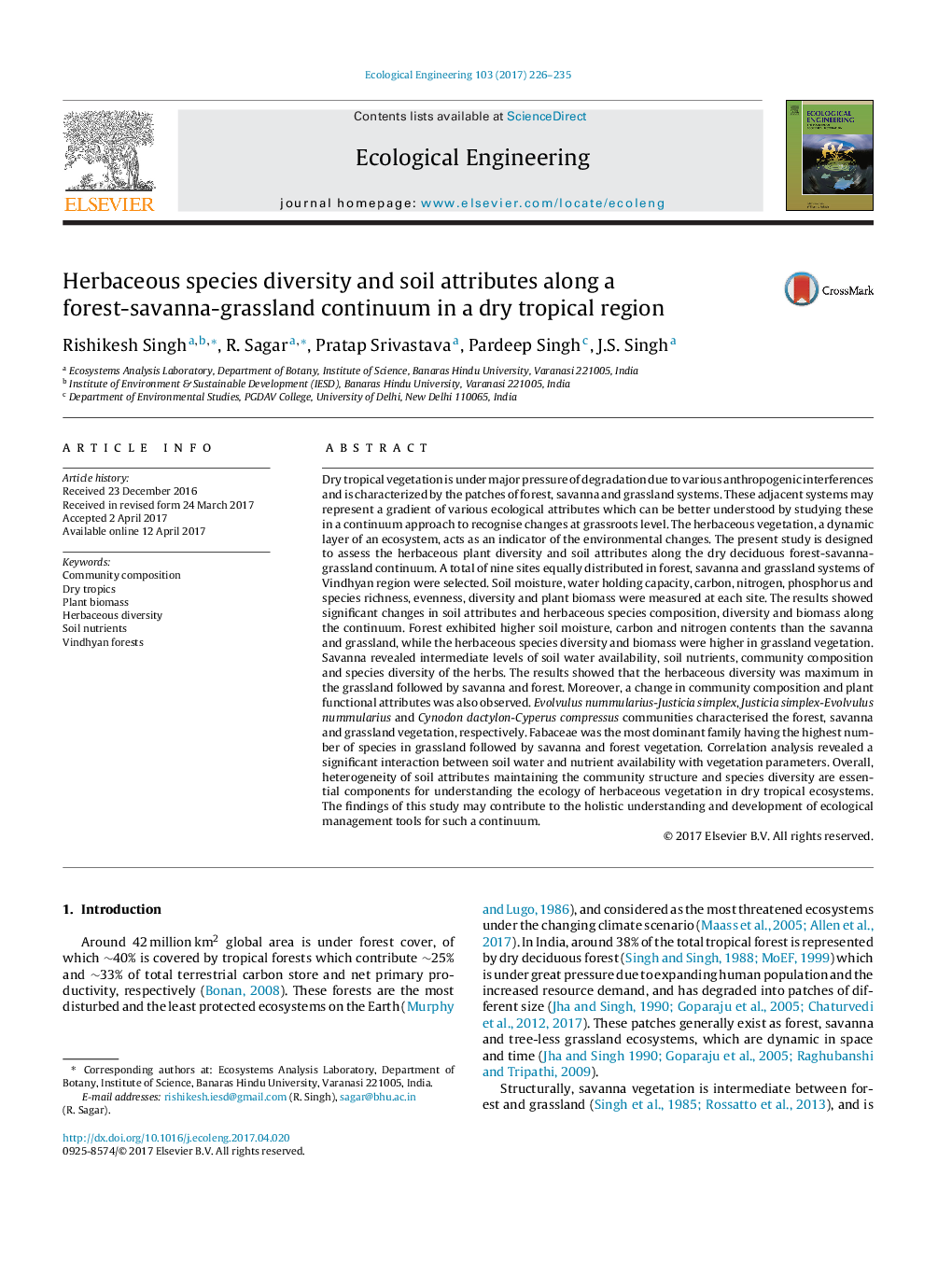| کد مقاله | کد نشریه | سال انتشار | مقاله انگلیسی | نسخه تمام متن |
|---|---|---|---|---|
| 5743582 | 1412315 | 2017 | 10 صفحه PDF | دانلود رایگان |
- Soil water availability, soil-C, -N, decreased along the forest-savanna-grassland continuum.
- Forest-savanna-grassland continuum showed distinct herbaceous community composition.
- Herbaceous diversity and biomass increased along forest-savanna-grassland continuum.
- Edaphic factors governed the species composition and diversity of the studied continuum.
Dry tropical vegetation is under major pressure of degradation due to various anthropogenic interferences and is characterized by the patches of forest, savanna and grassland systems. These adjacent systems may represent a gradient of various ecological attributes which can be better understood by studying these in a continuum approach to recognise changes at grassroots level. The herbaceous vegetation, a dynamic layer of an ecosystem, acts as an indicator of the environmental changes. The present study is designed to assess the herbaceous plant diversity and soil attributes along the dry deciduous forest-savanna-grassland continuum. A total of nine sites equally distributed in forest, savanna and grassland systems of Vindhyan region were selected. Soil moisture, water holding capacity, carbon, nitrogen, phosphorus and species richness, evenness, diversity and plant biomass were measured at each site. The results showed significant changes in soil attributes and herbaceous species composition, diversity and biomass along the continuum. Forest exhibited higher soil moisture, carbon and nitrogen contents than the savanna and grassland, while the herbaceous species diversity and biomass were higher in grassland vegetation. Savanna revealed intermediate levels of soil water availability, soil nutrients, community composition and species diversity of the herbs. The results showed that the herbaceous diversity was maximum in the grassland followed by savanna and forest. Moreover, a change in community composition and plant functional attributes was also observed. Evolvulus nummularius-Justicia simplex, Justicia simplex-Evolvulus nummularius and Cynodon dactylon-Cyperus compressus communities characterised the forest, savanna and grassland vegetation, respectively. Fabaceae was the most dominant family having the highest number of species in grassland followed by savanna and forest vegetation. Correlation analysis revealed a significant interaction between soil water and nutrient availability with vegetation parameters. Overall, heterogeneity of soil attributes maintaining the community structure and species diversity are essential components for understanding the ecology of herbaceous vegetation in dry tropical ecosystems. The findings of this study may contribute to the holistic understanding and development of ecological management tools for such a continuum.
209
Journal: Ecological Engineering - Volume 103, Part A, June 2017, Pages 226-235
